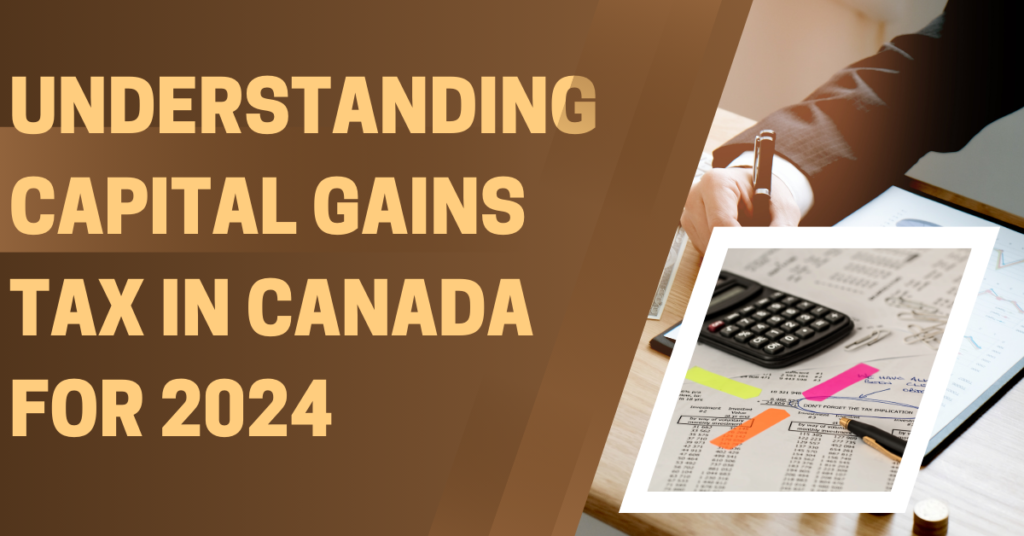Capital gains tax. It’s what you pay when you profit from selling investments. Sell for more than you bought? You owe tax on the gain. But knowing how it works can save you money. This guide covers what it is, how it’s taxed in Canada, and how to cut it down.
What is Capital Gains Tax?
The 2024 updates to Canada’s capital gains tax rules introduced significant changes, making it important to understand how these adjustments affect your investments. For individual taxpayers, the first $250,000 of annual capital gains continues to be taxed at a 50% inclusion rate, while any gains above this threshold are taxed at a higher inclusion rate of 66.67%. Corporations and most types of trusts are now taxed on two-thirds (66.67%) of all their capital gains.
Key Points to Note:
- Capital Gains Inclusion Rate: For individuals, the first $250,000 remains at 50% inclusion, but for gains exceeding this, 66.67% is included in taxable income. For corporations and trusts, the 66.67% inclusion rate applies to all capital gains.
- Lifetime Capital Gains Exemption: The new rules have also increased the Lifetime Capital Gains Exemption (LCGE) to $1.25 million for qualified small business shares and eligible farm and fishing properties. This provides additional room for tax-free gains.
- Principal Residence Exemption: The principal residence exemption still allows homeowners to avoid capital gains tax when selling their primary home, as long as it meets the criteria. However, properties sold within 12 months of purchase may not qualify unless specific conditions, such as job relocation or disability, are met.
- Offsetting Capital Gains with Losses: One effective strategy is using capital losses to offset gains. Losses can be carried back three years or carried forward indefinitely to reduce your taxable gains. This can be particularly useful for investors looking to manage their tax liabilities across multiple years.
- Registered Accounts: Investments held in registered accounts like RRSPs, TFSAs, and RESPs continue to be tax-sheltered. This means you won’t pay capital gains tax until you withdraw funds (for RRSPs), or potentially never for TFSAs and RESPs, making these accounts valuable for tax planning.
What is a Capital Loss?
Definition: A capital loss occurs when an investment or asset is sold for less than its purchase price.
Benefits: Capital losses can be used to offset taxable capital gains, reducing the overall tax owed. Additionally, losses can be applied to gains from the past three years or carried forward to offset future gains.
Capital Gains Tax Rate in Canada
General Rule: In Canada, 50% of capital gains are taxed at your income tax rate.
New Rules (Effective June 25, 2024): For capital gains up to $250,000, 50% is taxed. For gains over $250,000, 66.67% is taxed.
Corporations and Trusts: These entities are always taxed on two-thirds (66.67%) of their total gains.
Example: If you sell an investment for a $400,000 profit:
- The first $250,000: 50% taxed, which equals $125,000.
- The remaining $150,000: 66.67% taxed, which equals $100,005.
- Total Taxable Income = $225,005.

Calculating Capital Gains Tax
Steps:
- Adjusted Cost Base (ACB): This is the purchase price plus any additional fees.Example: Suppose you buy 100 shares at $15 each and later 50 more shares at $20 each. Your ACB is: (100 shares x $15) + (50 shares x $20) = $1500 + $1000 = $2500. ACB per share = $2500 / 150 shares = $16.67.
- Calculate Capital Gains: If you sell 60 shares at $25 each, you receive $1500. Gain = $1500 – (60 shares x $16.67) = $1500 – $1000.20 = $499.80.
Many financial institutions track your capital gains and ACB for you, but if you have a self-directed account, you may need to calculate this yourself.
Reducing or Avoiding Capital Gains Tax in Canada Strategies
- Offset Gains with Losses: Use capital losses to offset gains in the same year, or carry them forward/back to other years.
- Tax Shelters: Use RRSPs, TFSAs, LIRAs, and RESPs to defer taxes until withdrawal. These accounts shelter your investments from tax until you withdraw funds.
- Donate Assets to Charity: Transfer stocks directly to charities to avoid triggering a capital gain and receive a tax receipt for the current fair market value of the donated stocks.
- Tax-Loss Harvesting: Sell low-performing investments to create capital losses that offset gains. Be cautious of the “superficial loss” rule, which disallows claiming a loss if you repurchase the same or similar investment within 30 days.
- Co-Own Assets with a Partner: Splitting ownership of assets with a partner can help keep each person’s taxable gains below the higher tax threshold, reducing the overall tax burden.
Conclusion
Saving on capital gains is all about timing. Use losses to balance gains. Choose tax-friendly accounts. Donate when possible. Plan smartly, and you keep more of your profit. Stay ahead of the rules, and your taxes won’t take a bigger bite than they should.
